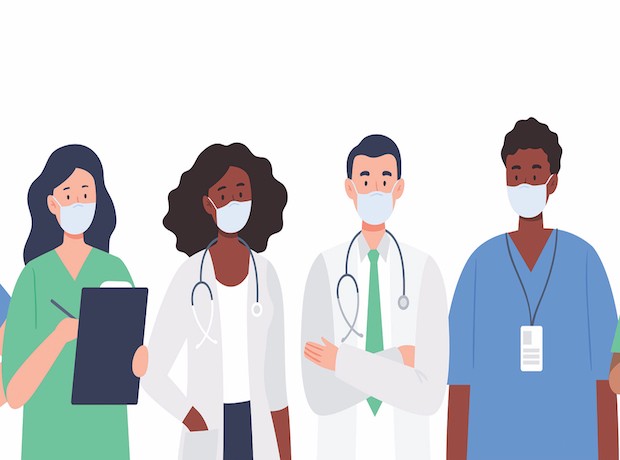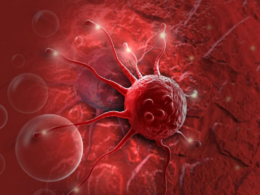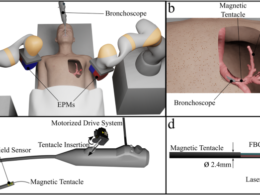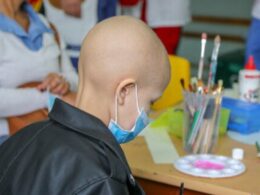Martin Price explores key learnings from the past 18 months
PharmaTimes magazine
September 2021
Martin Price, vice president of health economics, market access and reimbursement in Europe, Middle East and Africa at the Janssen Pharmaceutical Companies of Johnson & Johnson
It almost goes without saying that the COVID-19 pandemic has had a dramatic effect on every aspect of the global health ecosystem. Cancer care is no exception.
Across Europe, disruption to cancer services has slowed diagnoses, delayed treatment and hampered ongoing patient management.
This has been driven by a multitude of factors, such as local and national lockdowns, patients’ reluctance to attend in- person appointments for fear of contracting the virus, and reduced system capacity due to reprioritisation of services and reallocation of healthcare staff.
Service providers, supported by patients and their caregivers, have adapted with incredible speed and ingenuity to reduce the impact as much as possible.
Without their expertise and professionalism, the situation would have been even worse.But to future-proof patient care, we need to learn from our experience of the past 18 months.
There will be a post-pandemic pressure on healthcare budgets and, with it, a temptation to cut spending on medicines. This would be a false economy.
Far better to adopt a whole systems thinking, and consider new treatments that improve outcomes, reduce toxicity and simplify administration as a prudent investment.Without this mindset, we could risk reversing the great strides cancer care has seen in recent years. It’s a critical moment. As we emerge from this pandemic we must continue to improve care, enhance patient outcomes and expand access to innovative treatments.Cancer causes almost two million deaths per year in Europe. 1We simply cannot afford to let it become the “forgotten C of the coronavirus crisis”. 2
The impact of COVID-19 on cancer care in Europe
Several analyses have been conducted to evaluate the impact of COVID-19 on patients with cancer in Europe. 3The findings are alarming and the impact on all aspects of cancer care is clear.
- Prevention and awareness campaigns were suspended or cancelled, which disrupted screening services.
- Vaccinations against human papilloma virus were also affected. 4
- An estimated 100 million screening tests did not happen, and this huge drop-off is reflected in the reduced number of new cancer diagnoses. 5
- In Belgium and the Netherlands alone, the number of cancers diagnosed in the first lockdown of 2020 declined by 30- 40%. 6
- Clinicians saw 1.5 million fewer patients with cancer in the first year of the pandemic, according to estimates, while urgent referrals were cut by up to a half. 7
During the first ten weeks of the pandemic in the UK, for example, 6,000 fewer people than expected received chemotherapy, while more than 12,000 people were left waiting for cancer surgery. 9
We’re likely to feel the consequences of all this for years to come, especially in patient outcomes and survival.
Diagnosis and treatment delays will lead to more intensive short-term disease management and poorer long-term outcomes. Across four major cancer types in the UK, for example, diagnosis delays are predicted to increase cancer deaths by approximately 17% over the next five years. 10
Many clinical trials have also been delayed or suspended, 4hindering scientific research and causing a detrimental knock-on effect to innovation.
Innovating our way out of the crisis
As the vaccination roll-out and many other measures take effect, now is the time to reflect on the hard lessons of the pandemic and carefully consider how we set ourselves to emerge from this period as strongly as possible.
- What learnings can we take from how health systems adapted?
- What best practices can we retain, particularly with regard to the care of cancer patients?
During the pandemic, the National Comprehensive Cancer Network (NCCN) and the European Society for Medical Oncology (ESMO) published their advice on how to continue providing the best cancer care.
One key recommendation was about communication. 11, 12
There was a major shift to ‘telemedicine’, where patients engage with medical practitioners via technology, rather than in face-to- face settings. 11,12
Telemedicine is more than just this, of course. It can use artificial intelligence (AI) to help providers work more efficiently, keep patients connected with wearables and other tools for remote patient monitoring, and even use robotics to bring specialty care to places it has never been. 13
Contacts between patients and healthcare providers using telephone or web-technology have also proved favourable for toxicity evaluation, dose adaptation and supportive care recommendations.
So, as well as just updating communication methods, this shift also speaks to efficiency and convenience. 11, 12
Simpler administration methods and the use of more tolerable treatments is another important area to consider. Simplification of the care pathway can mean patients avoid time-consuming infusions in favour of oral or subcutaneous delivery, for example.
This, in turn, can have numerous benefits: increasing throughput, easing capacity issues, avoiding expensive inpatient follow-up and — most importantly — improving the experience for the patient. 14
We need to think more holistically about the benefits of treatments and how different product profiles can help drive patient care in new directions.
In its guidelines for the delivery of systemic anticancer treatments in the UK, NICE recognised the value of oral or subcutaneous therapies that can be continued at home. 15
We believe these experiences must be built on for the future.There are many other examples of changes that optimise convenience and efficiency.
- Patients in the UK have benefited from chemotherapy buses and the fast-track roll out of an innovative and life-saving type of radiotherapy.16
- For patients with lung cancer, stereotactic ablative radiotherapy (SABR) is a very precise method that uses higher but fewer doses than standard radiotherapy. 17
With around five outpatient visits, compared to the 20–30 treatments of conventional radiotherapy, SABR cuts the number of hospital visits that potentially vulnerable cancer patients need to make.
Roll out originally planned for 2022 has been accelerated and it’s been available on the NHS since March 2021. 16
Such adaptations to care pathways are win-wins.
- They can deliver more convenient treatment solutions, alleviate pressure on overstretched healthcare capacities and provide a marked improvement to the quality of life of both patients and carers.
- And they must not be seen as just emergency measures, but an essential — perhaps overdue — evolution of the standard of care.
Thinking, acting and evaluating differently
The pandemic has forced us to re-evaluate how care is delivered to patients with cancer.
As well as adapting existing systems, we have seen how quickly it has been possible to develop vaccines for COVID-19, and have these approved in a timely manner for the benefit of society. Innovation — when combined with partnership, collaboration and rapid adoption — can change the trajectory of human health.
A newfound culture of agility in decision-making has been a significant success factor, together with leveraging a plethora of real-world data to inform testing practices, treatment decisions, transmission rates and patient outcomes.
Healthcare providers have pivoted their treatment options, prioritising those that reduce time spent in hospital.It’s vital we shape a health ecosystem that values and fosters innovation, and in which delivery of healthcare is organised around the patients and their medical conditions.
Our collective goal should be to accurately measure the outcomes that matter most to the patient, and evaluate costs based on achieving those outcomes.
Health systems where providers are rewarded according to the beneficial outcomes experienced by patients, as opposed to the numbers of patients treated, is key to the sustainability of all healthcare, cancer care included.
Pandemic pressures are, hopefully, beginning to subside.
But systems will remain under great strain, so we must grasp hold of hard- learned lessons, we must be smart in our allocation of resources, and we must invest in models of healthcare that don’t just treat and cure, but aim to prevent sickness and enhance all our lives.
Let’s renew our focus on the needs of patients to receive timely and efficient treatment, and continue to work together to drive innovation that benefits people, health systems and society as a whole.
About the author
Martin Price, is vice president of health economics, market access and reimbursement in Europe, Middle East and Africa at the Janssen Pharmaceutical Companies of Johnson & Johnson
References
- GLOBOCAN 2020. Population fact sheet Europe. Available at: https://gco.iarc.fr/today/data/factsheets/ populations/908-europe-fact-sheets.pdf Last accessed July 2021.
- Macmillan Cancer Support. The forgotten “C”? The impact of Covid-19 on cancer care. Available at: https:// www.macmillan.org.uk/assets/forgotten-c-impact-of-covid-19-on-cancer-care.pdf Last accessed July 2021.
- European Cancer Organisation. Covid-19 and cancer data intelligence. Available at: https://www. europeancancer.org/timetoact/impact/data-intelligence Last accessed July 2021.
- European Parliament Special Committee on Beating Cancer. Public consultation Synopsis Report — The impact of the COVID-19 pandemic on cancer prevention, health services, cancer patients and research: lessons from a public health crisis. Available at: https://www.europarl.europa.eu/cmsdata/233010/ Synopsis%20report%20BECA%20COVID-19%20Consultation%201228560EN.pdf Last accessed July 2021.
- European Cancer Organisation. Covid-19 and cancer data intelligence: impact of Covid-19 on cancer screening. Available at: https://www.europeancancer.org/timetoact/impact/data-intelligence Last accessed July 2021.
- World Health Organization Regional Office for Europe. Statement — Catastrophic impact of COVID-19 on cancer care. Available at: https://www.euro.who.int/en/media-centre/sections/statements/2021/ statement-catastrophic-impact-of-covid-19-on-cancer-care Last accessed July 2021.
- European Cancer Organisation. Covid-19 and cancer data intelligence: impact of Covid-19 on cancer patients seen. Available at: https://www.europeancancer.org/timetoact/impact/data-intelligence Last accessed July 2021.
- European Cancer Organisation. Covid-19 and cancer data intelligence: impact of Covid-19 on cancer treatment. Available at: https://www.europeancancer.org/timetoact/impact/data-intelligence Last accessed July 2021.
- Cancer Research UK Over 2 million people waiting for cancer screening, tests and treatment. Available at: https://news.cancerresearchuk.org/2020/06/01/impact-of-coronavirus-on-cancer-services-revealed-over- 2-million-people-waiting-for-screening-tests-and-treatments/ Last accessed July 2021.
- Maringe C, Spicer J, Morris M, et al. The impact of the COVID-19 pandemic on cancer deaths due to delays in diagnosis in England, UK: a national, population-based, modelling study. Lancet Oncol. 2020;21:1023- 1034.Ueda M, Martins R, Hendrie PC, et al.
- Managing cancer care during the COVID-19 pandemic: agility and collaboration towards a common goal. J Natl Compr Canc Netw. 2020;18:366–369.ESMO.
- Cancer patient management during the Covid-19 pandemic. Available at: https://www.esmo.org/ guidelines/cancer-patient-management-during-the-covid-19-pandemic Last accessed July 2021.Intel.
- Telemedicine technology powered by AI and IoT. Available at: https://www.intel.co.uk/content/www/ uk/en/healthcare-it/telemedicine.html Last accessed July 2021.
- Bittner B et al., Subcutaneous Administration of Biotherapeutics: An Overview of Current Challenges and Opportunities. BioDrugs. 2018;32(5):425–440.
- National Institute for Health and Care Excellence (NICE). COVID-19 rapid guideline: delivery of systemic anticancer treatments. Available at: https://www.nice.org.uk/guidance/ng161/resources/covid19-rapid- guideline-delivery-of-systemic-anticancer-treatments-pdf-66141895710661 Last accessed July 2021.
- NHS England. Convenient modern cancer treatment for patients during COVID-19 pandemic. June 2020. Available at: https://www.england.nhs.uk/2020/06/convenient-modern-cancer-treatment-for-patients- during-covid-19-pandemic/. Last accessed: July 2021.Dubaere E, Goffaux M, Wanet M, et al.
- Long term outcome after 48 Gy stereotactic ablative body radiotherapy for peripheral stage I non-small cell lung cancer. BMC Cancer. 2019;19:639.
Originally published at https://www.pharmatimes.com on September 6, 2021.
TAGS: _cancer strategy; impact of the pandemic; trends












